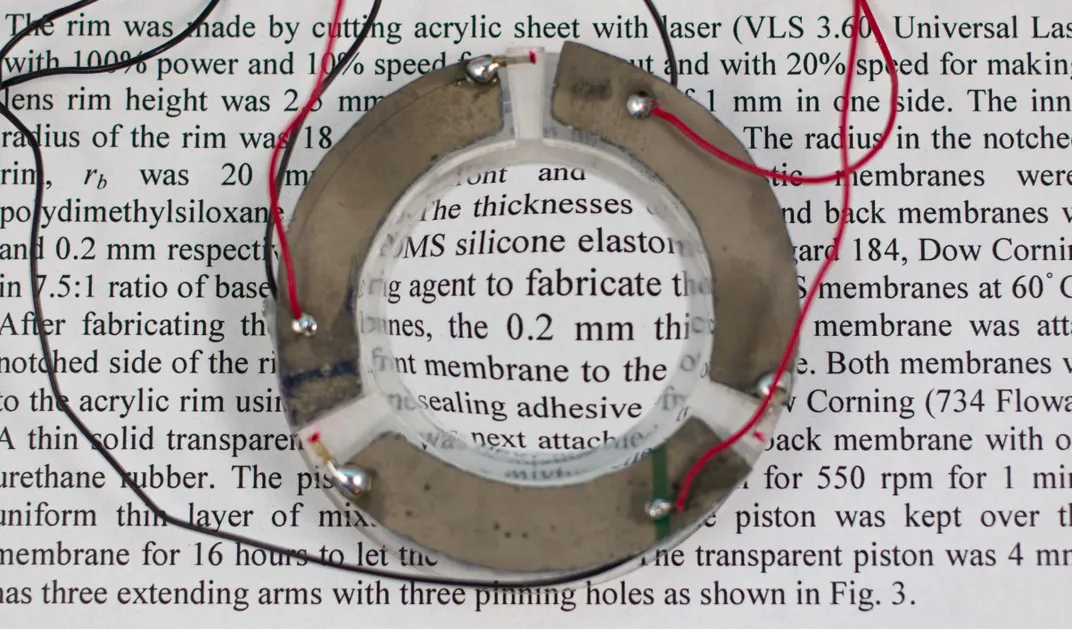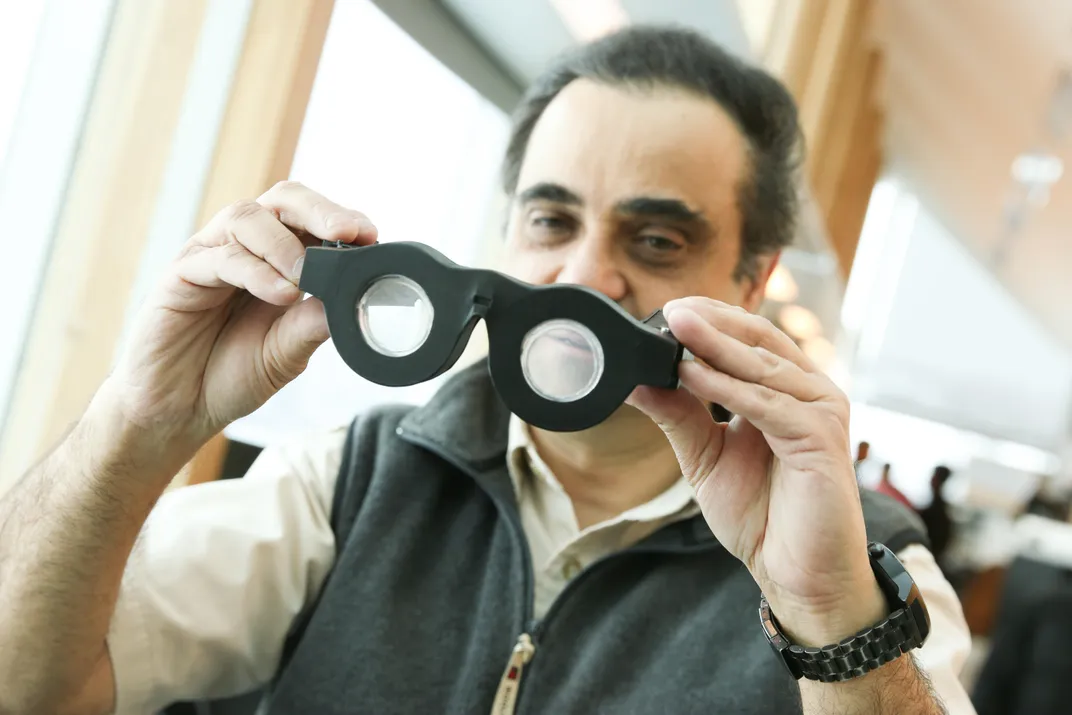These “Smart Glasses” Adjust To Your Vision Automatically
The glasses’ liquid lenses change shape according to the distance of objects, making reading glasses and bifocals unnecessary
/https://tf-cmsv2-smithsonianmag-media.s3.amazonaws.com/filer/fb/f0/fbf080b0-cacd-469a-b03b-17efc91f355d/smart_glasses.jpg)
By age 45, most of us will need glasses at least for reading. That’s because our eyes’ ability to accommodate—to change focus to see objects at different distances—degrades with age. In young eyes, the eyeball’s crystalline lens changes shape easily, allowing this accommodation. But as we get older, this lens stiffens. Objects in close range suddenly look blurry. Hence the “readers” most middle-aged adults begin wearing on a chain or tucking in a handbag, or the bifocals worn by those who already had vision problems.
But the days of popping reading glasses on and off or constantly shifting your gaze through bifocals may be numbered. Researchers at the University of Utah have developed “smart glasses” with liquid lenses that can automatically adjust their focus.
“The major advantage of these smart eyeglasses is that once a person puts them on, the objects in front of the person always show clear, no matter at what distance the object is,” says Carlos Mastrangelo, the electrical and computer engineering professor who led the research along with doctoral student Nazmul Hasan.
Regular prescription glasses, Mastrangelo explains, don’t fix the eyes’ accommodation problems. They simply shift the range of what’s in focus rather than expanding it. So if you put on a pair of reading glasses, the once-blurry page a foot from your eyes will be clear, but objects on the other side of the room will suddenly be blurry. The reverse is true of people who need glasses only for seeing far distances.
The new smart glasses consist of lenses made of glycerin, a thick clear liquid, enclosed in flexible membranes. The membranes can be mechanically moved back and forth, changing the curvature of the glycerin lens. The lenses are set in frames containing a distance meter on the bridge, which measures the distance from the wearer’s face to nearby objects using infrared light. The meter then sends a signal to adjust the curve of the lens. This adjustment can happen quickly, letting the user focus from one object to another in 14 milliseconds.
The glasses come with a smartphone app, which uses data about the wearer’s eyeglass prescription to automatically calibrate the lenses via Bluetooth. When the wearer gets a new prescription, they can simply update the information on the app.

“This means that as the person’s prescription changes, the lenses can also compensate for that, and there is no need to buy another set for quite a long time,” Mastrangelo says.
Though the glasses have not yet been formally tested, Mastrangelo and other members of his lab have tried them out. The current prototype is, to put it gently, bulky (think a clear version of Doc’s goggles in Back to the Future). Formal wearer tests are in the works.
Some adjustments will need to be made before the glasses could be ready for the market, Mastrangelo says. They need to reduce the weight and thickness of the eyepieces and make the electronic subsystems smaller. They also need “much improved” styling. Mastrangelo expects to overcome these issues and have a product on shelves within two to three years.

/https://tf-cmsv2-smithsonianmag-media.s3.amazonaws.com/accounts/headshot/matchar.png)
/https://tf-cmsv2-smithsonianmag-media.s3.amazonaws.com/accounts/headshot/matchar.png)